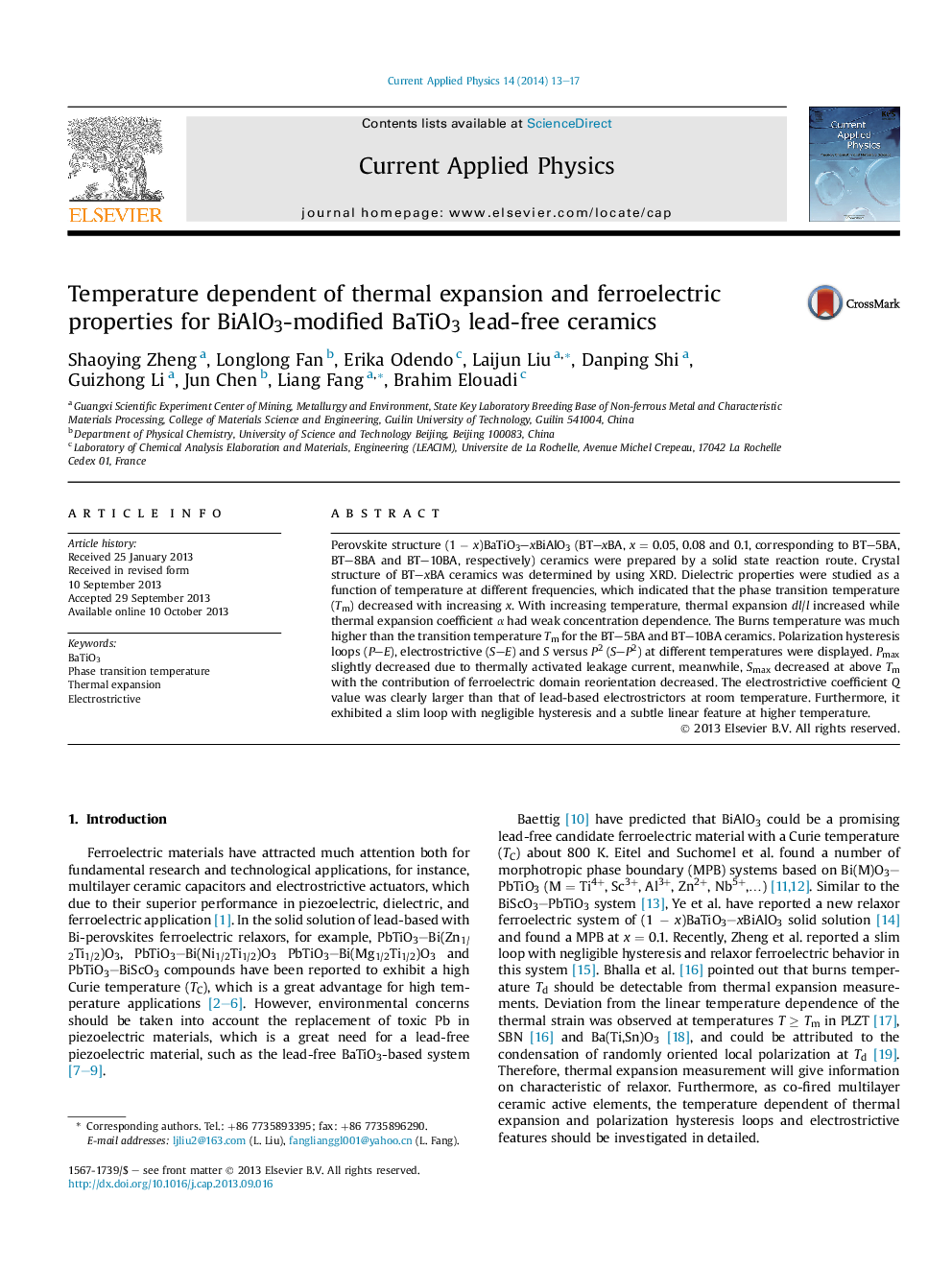| Article ID | Journal | Published Year | Pages | File Type |
|---|---|---|---|---|
| 1786963 | Current Applied Physics | 2014 | 5 Pages |
•Thermal expansion of BaTiO3–BiAlO3 increases with increasing temperature.•Thermal expansion coefficient of BT–BA has weak concentration dependence.•Smax decreased above Tm due to ferroelectric domain reorientation decreased.•Electrostrictive coefficient is clearly larger than that of lead-based ceramics.
Perovskite structure (1 − x)BaTiO3–xBiAlO3 (BT–xBA, x = 0.05, 0.08 and 0.1, corresponding to BT–5BA, BT–8BA and BT–10BA, respectively) ceramics were prepared by a solid state reaction route. Crystal structure of BT–xBA ceramics was determined by using XRD. Dielectric properties were studied as a function of temperature at different frequencies, which indicated that the phase transition temperature (Tm) decreased with increasing x. With increasing temperature, thermal expansion dl/l increased while thermal expansion coefficient α had weak concentration dependence. The Burns temperature was much higher than the transition temperature Tm for the BT–5BA and BT–10BA ceramics. Polarization hysteresis loops (P–E), electrostrictive (S–E) and S versus P2 (S–P2) at different temperatures were displayed. Pmax slightly decreased due to thermally activated leakage current, meanwhile, Smax decreased at above Tm with the contribution of ferroelectric domain reorientation decreased. The electrostrictive coefficient Q value was clearly larger than that of lead-based electrostrictors at room temperature. Furthermore, it exhibited a slim loop with negligible hysteresis and a subtle linear feature at higher temperature.
